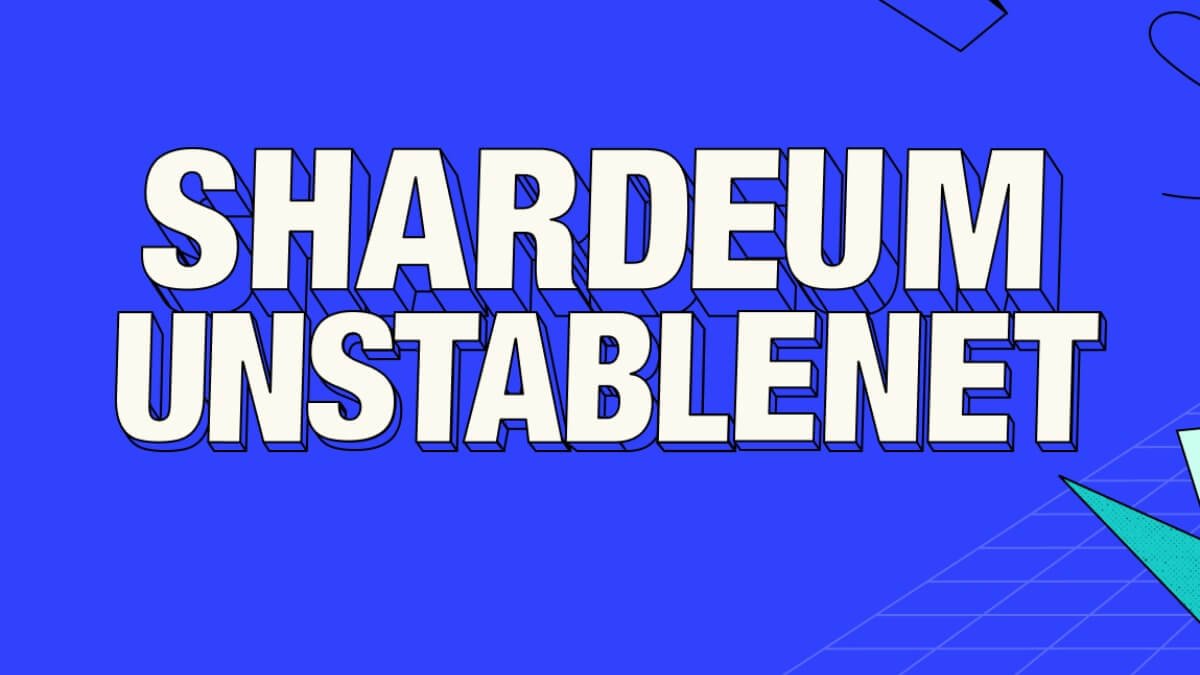- Shardeum has launched Unstablenet — the first EVM-compatible sharded testnet.
- This testnet offers developers an open, experimental environment to build and stress-test scalable dApps using familiar Ethereum tools like Solidity, MetaMask, and Hardhat.
- Unstablenet is designed for experimentation, with frequent resets and updates to prepare Shardeum’s smart contract features for mainnet.
Shardeum, a Layer-1 blockchain known for its linear scalability through dynamic sharding, has launched Unstablenet, the first EVM-compatible sharded testnet. The experimental network went live on July 24, 2025. This marks a milestone in Ethereum Virtual Machine (EVM) infrastructure by allowing Solidity developers to build dApps directly on a natively sharded chain.
Unstablenet is designed not as a stable environment, but as an evolving, breakable one. Shardeum intentionally encourages developers to push its boundaries, gather performance data, and stress-test core components in preparation for mainnet smart contract deployment.
Why Unstablenet Matters?
Unstablenet’s launch underscores the blockchain industry’s increasing focus on scalability without compromising decentralization or developer accessibility. While Layer-2 rollups and sidechains have become common scalability solutions for Ethereum, sharded Layer-1 solutions remain rare and difficult to execute—especially with full EVM compatibility.
Shardeum’s move positions it at the forefront of solving the blockchain trilemma. According to a 2024 report by Electric Capital, 87% of multichain developers prefer EVM-compatible platforms for faster onboarding and tooling integration.
Shardeum offers the same familiar Solidity and Ethereum tools—like Remix, MetaMask, and Hardhat—on a sharded infrastructure, reducing friction for dApp migration and innovation.
Unstablenet’s Features and Tools for Developers
Unstablenet offers a suite of tools enabling developers to start building immediately:
- Network Explorer: explorer-unstable.shardeum.org
- RPC Endpoint: api-unstable.shardeum.org
- Faucet: Available via Shardeum’s Discord
- dApp Playground: dapps-playground-unstablenet.shardeum.org
- Documentation: docs.shardeum.org
Transaction costs are minimal—under one cent per basic transfer—while smart contracts deploy through Solidity using Chain ID 8080.
Incentives and Community Building
In an effort to crowdsource resilience testing, Shardeum plans to roll out a bug bounty program and additional incentives. This mirrors successful programs by leading networks like Optimism and Arbitrum, which used testnet incentives to boost developer engagement and uncover early vulnerabilities.
Srini Parthasarathy, CTO of Shardeum, emphasized the collaborative ethos: “This early access isn’t just about testing code; it’s about helping shape the core infrastructure. Transparency and shared ownership foster deeper trust and set the foundation for a truly community-driven ecosystem.”
Shardeum is emerging as a serious contender in the Layer-1 space by focusing on predictable scalability. The blockchain claims it can maintain sub-second finality and low gas fees as throughput scales linearly with each added validator.
Shardeum recently launched Proof of Community Campaign which aims to spread blockchain literacy and bring 10,000 people on chain through 200+ local meetups worldwide. The program features practical PayFi demonstrations with hands-on learning experiences to build meaningful engagement.
As interest in decentralized finance (DeFi), gaming, and on-chain social apps accelerates, the need for high-performance EVM chains has never been greater. Shardeum’s Unstablenet could be a proving ground for how decentralized communities can actively participate in shaping Layer-1 infrastructure from the ground up.
Read Also: Mogo Deepens Bitcoin Strategy with $1M Investment in Digital Commodities Capital
Disclaimer: This article is for informational purposes only and does not constitute investment advice.
